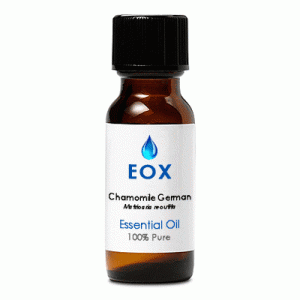|
Characteristics:
An inky-blue viscous liquid with a strong, sweetish warm-herbaceous odor. It blends well with lavender, patchouli,
rose, benzoin, neroli, bergamot, marjoram, lemon, ylang-ylang, jasmine, clary sage and labdanum.
Principal Constituents:
These are naturally occuring in the essential oil.
- chamazulene
- farnesene
- bisobolol oxide
- enyndicycoether
General Actions:



 Open Symbols Key
Open Symbols Key
Analgesic, anti-allergenic, antiphlogistic, antispasmodic, carminative, cicatrizant, cholagogue, digestive, emmenagogue, febrifuge, fungicidal, hepatic, nervine, stimulant of leucocyte production, stomachic, sudorific, vermifuge, vulnerary.
Safety:
Non-toxic, non-irritant; can cause dermatitis in some individuals in concentration.
Primary Therapy Agent:
Acne, allergies, baldness and hair care, boils, abscesses, blisters, cuts/sores, dermatitis, dry and
sensitive skin, eczema, insect bites, irritated and inflamed skin, rashes, toothache, teething pain, wounds, aches and pains,
arthritis, rheumatism, sprains, strains, colic, flatulence, indigestion, nausea, vomiting, cystitis, dysmenorrhea, premenstrual
tension/PMT, headache, insomnia, nervous tension, stress-related conditions, neuralgia, sciatica.
Secondary Therapy Agent:
Burns, chilblains, psoriasis, menorrhagia, chickenpox, migraine.
Important Note:
The information on Florapathics.com is
only provided for educational purposes, and further research should be done
on each essential oil to be assured of its proper usage for each individual.
Aromatherapy is not meant to be a replacement for care under a qualified
health professional, but should be considered a complimentary modality.
|









